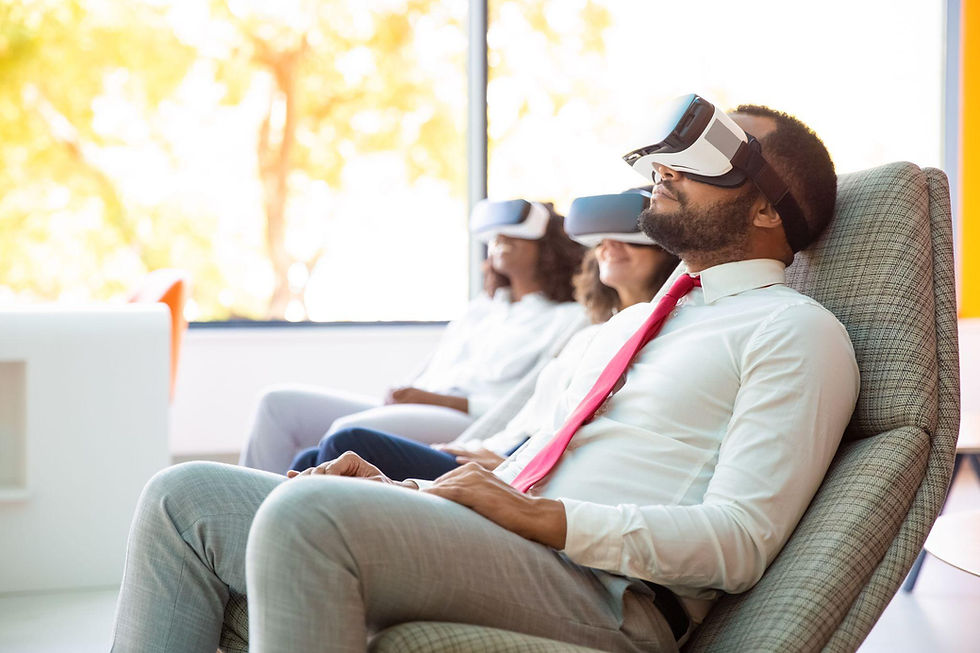Rise of VR & AR in Restaurant Training Manuals and Handbooks
- Janos Laszlo
- Sep 26
- 3 min read

The food service industry has always adapted rapidly to the demands of rapidly changing customer expectations. In quick service restaurants in particular, effective training and onboarding employees has been an ongoing problem. Restaurant training manuals and handbooks were the main go-to tools for instructing employees on customer service, food handling, and corporate culture for decades. Although these written manuals continue to be an absolute necessity, the sector is experiencing a significant change: immersive technologies such as Virtual Reality (VR) and Augmented Reality (AR) are revolutionizing restaurant staff training.
Anything but cutting-edge buzzwords, VR and AR have become realistic, affordable digital training tools for quick-service restaurants. They provide immersive, interactive training spaces that assist in upskilling hospitality staff better than printed texts or videos alone can.
Why Upskilling Is Important for Hospitality Today?
Hospitality is one of the world's quickest-moving industries. Staff turnover levels are legendary, particularly in fast-food restaurants where new staff have to be up to speed within days, not weeks. This ongoing churn means managers are constantly introducing new team members who must quickly acquire food safety, customer service, and teamwork training.
Upskilling hospitality staff is not just about onboarding new employees; it's about continuously providing the training necessary to keep workers confident, competent, and motivated. Without proper investment in employee development, restaurants risk higher turnover, inconsistent service, and unhappy customers. That's why innovative solutions like VR and AR are gaining traction; they directly address these pain points.
What Are VR and AR, and How Do They Work for Staff Training?
To see the trend, let's dissect what these technologies represent in the real world.
Virtual Reality (VR): VR puts workers within a completely simulated environment. Using a headset, workers can rehearse taking orders from customers, cooking, or even handling hectic rush hours; all without the stress of an actual shift. Errors in VR are safe learning experiences.
Augmented Reality (AR): AR places digital data on top of the real world. For instance, an employee donning AR eyewear might receive instructions superimposed over the workstation as he is preparing a dish. This instruction assists them in learning proper portion sizes, presentation, and timing; step-by-step, real-time.
These immersive techniques make training engaging and memorable, combining hands-on practice with digital instruction.
Benefits: Why Restaurants Are Embracing AR and VR Tools
The use of VR and AR for restaurant training is motivated by obvious advantages:
Faster onboarding: New employees can begin performing well sooner.
Improved engagement: Interactive training is more likely to be remembered than reading alone.
Greater retention of skills: Workers remember more when training is interactive.
Building confidence: Employees have opportunities to rehearse scenarios in safety settings.
Consistency across chains: Billed modules with pre-defined VR and AR experiences ensure all employees are exposed to the same quality of training; a necessity for franchises and international brands.
These tools essentially enhance efficiency and reduce personnel turnover.
Conquering the Challenges: Cost, Access, and Tech Adoption
Naturally, there are difficulties with new technology. Some restaurant owners are concerned about the upfront expense of VR headsets or AR platforms. Prices have fallen considerably, though, in the past few years, and subscription-based systems make them more affordable than ever.
Also worth mentioning is that VR and AR do not substitute for traditional Restaurant training manuals and handbooks; they supplement them. Physical or digital guides remain essential references, and immersive tools offer in-the-field practice. Combined, they provide a well-rounded training system for employees of all ages and skill levels.
Next Chapter: The Future of Restaurant Training Manuals and Handbooks
As technology advances, restaurant training manuals and handbooks will likely evolve into interactive, digital-first interfaces. Rather than paper or PDF documents, employees might receive training modules through apps that integrate text, video, quizzes, and immersive simulations.
The hospitality training of the future will be a mix: classic written materials as rapid reference points, AR to guide employees in real time, and VR for experiential practice. The mix keeps upskilling hospitality staff practical, interesting, and efficient throughout the whole workforce.
Building Better Teams for the Modern Restaurant
The hospitality world is rapidly evolving, as is the manner in which we train staff. Digital training tools for quick-service restaurants such as VR and AR are setting new standards for efficiency, consistency, and staff development. With the addition of restaurant training manuals and handbooksby immersive technologies, companies can develop more skilled, more confident employees who provide stellar service.
For restaurant executives, adopting these innovations is not merely about following trends; it's about creating better teams and more phenomenal customer experiences in a business where seconds count.







Comments